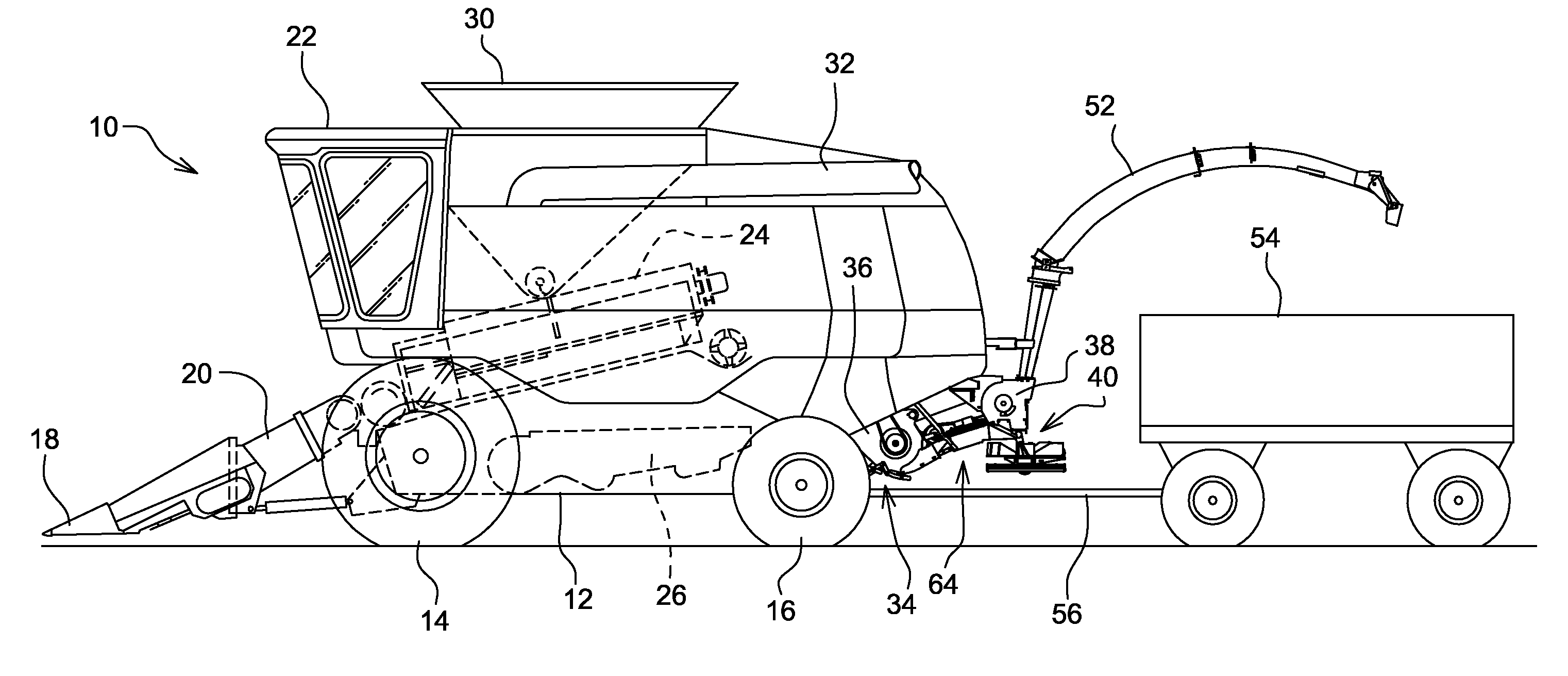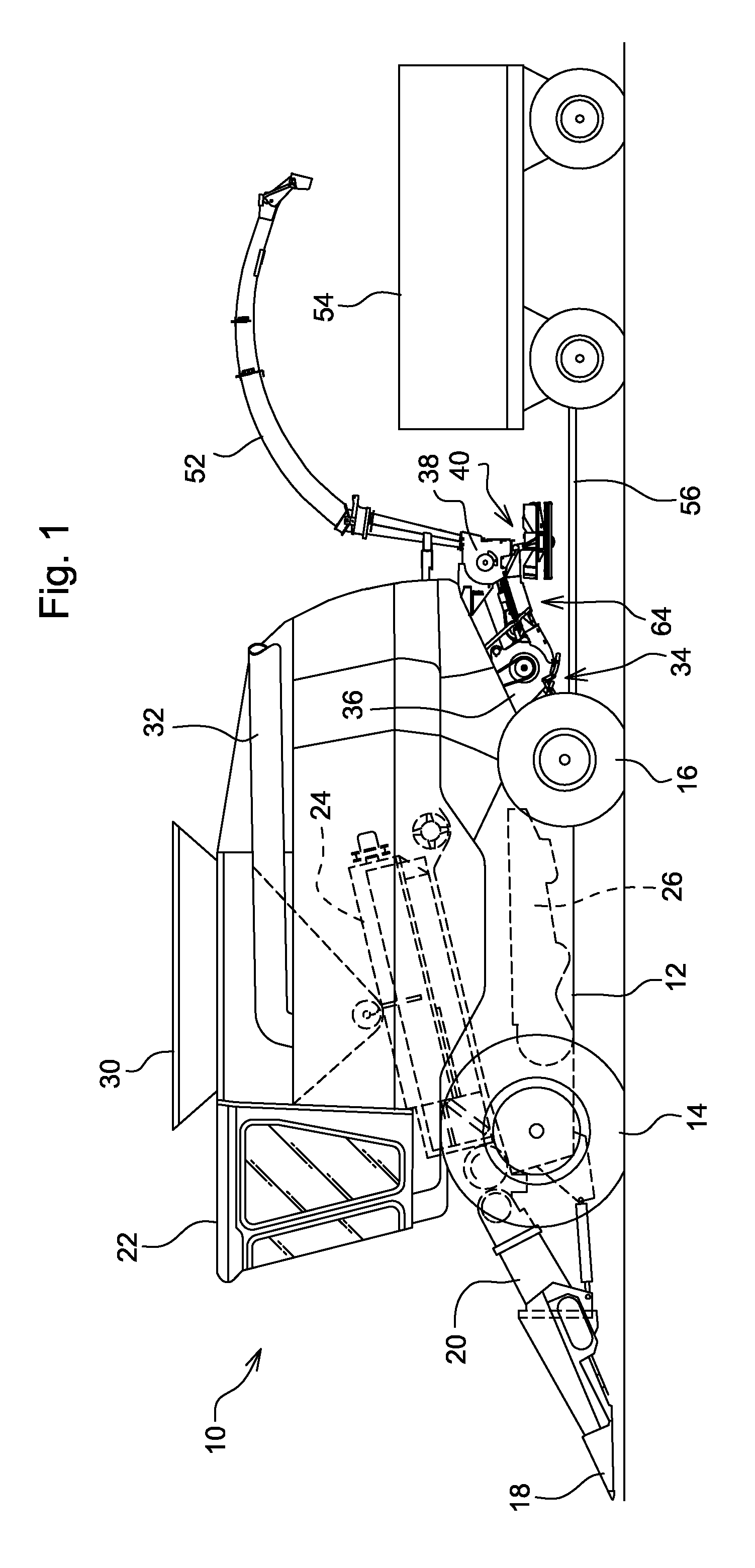Variable Rate Diverter For A Crop Residue Collecting Device Carried By A Combine Harvester
- Summary
- Abstract
- Description
- Claims
- Application Information
AI Technical Summary
Benefits of technology
Problems solved by technology
Method used
Image
Examples
Embodiment Construction
[0013]Referring now to FIG. 1, there is shown a self-propelled combine harvester 10 including a main frame 12 supported on front and rear sets of wheels 14 and 16, respectively. A harvester head 18 is mounted to a feeder house 20 carried at the forward end of the frame 12 so as to be in full view of an operator seated in a cab 22 mounted on the frame 12 above a rear end of the feeder house 20. Stalks or stems of the standing crop being harvested is cut by the harvesting head 18 and conveyed rearwardly, with the attached grain heads or ears, through the feeder house 20 which, in turn, delivers this crop matter to a threshing system 24 located just behind the feeder house and which, in turn, feeds the threshed crop material to a cleaning and separating system 26. Grain that is separated by the system 28 gravitates to the bottom of the system and is conveyed by a grain elevator (not shown) to a holding tank 30 from which the grain can be periodically transferred to a container carried ...
PUM
 Login to View More
Login to View More Abstract
Description
Claims
Application Information
 Login to View More
Login to View More - R&D
- Intellectual Property
- Life Sciences
- Materials
- Tech Scout
- Unparalleled Data Quality
- Higher Quality Content
- 60% Fewer Hallucinations
Browse by: Latest US Patents, China's latest patents, Technical Efficacy Thesaurus, Application Domain, Technology Topic, Popular Technical Reports.
© 2025 PatSnap. All rights reserved.Legal|Privacy policy|Modern Slavery Act Transparency Statement|Sitemap|About US| Contact US: help@patsnap.com



